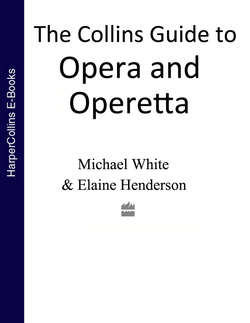Читать книгу The Collins Guide To Opera And Operetta - Michael White - Страница 60
ОглавлениеPelléas et Mélisande
FORM: Opera in five acts; in French
COMPOSER: Claude Debussy (1862–1918)
LIBRETTO: Maurice Maeterlinck’s play, slightly adapted by Debussy
FIRST PERFORMANCE: Paris, 30 April 1902
Principal Characters
Arkel, King of Allemonde Bass
Geneviève, Arkel’s daughter-in-law and mother of Golaud and Pelléas
Mezzo-soprano
Golaud, Arkeľs grandson Baritone
Pelléas, Arkeľs grandson and Golaud’s half-brother Tenor
Mélisande Soprano
Yniold, Golaud’s son by his first marriage Soprano/Boy treble
Synopsis of the Plot
Setting: The imaginary kingdom of Allemonde; medieval times
ACT I While out hunting, Golaud finds a mysterious girl, Mélisande, weeping in a forest; nearby is a well with a golden crown at the bottom, fallen from her head. Golaud marries Mélisande and, some time later, takes her to Arkeľs castle to ask his grandfather’s forgiveness for the unplanned marriage; Arkel had a different bride in mind for Golaud. On her arrival, Mélisande meets Pelléas and it is clear that they have fallen in love with each other.
ACT II Pelléas and Mélisande are together by a well when Mélisande drops her ring into the water; at that moment Golaud falls from his horse. Later, lying injured in bed, Golaud notices that the ring is missing and Mélisande replies, falsely, that she lost it by the sea. Golaud sends her, with Pelléas, to look for it.
ACT III Mélisande is sitting at the castle window, talking to Pelléas; she allows her long hair to fall over his shoulders and he plays with it. They are surprised in their game by Golaud who warns Pelléas to leave Mélisande alone. Golaud then questions his little son, Yniold, about the relationship between Pelléas and Mélisande and even holds him up to the window so that he can see what they are doing: just sitting together, answers the boy.
ACT IV Pelléas tells Mélisande that he is leaving and they plan one last meeting. Golaud is by now furiously jealous and attacks Mélisande, dragging her across the room by her hair until he is stopped by Arkel. The two lovers meet by the well, as arranged. In the distance they hear the castle doors being locked and barred – there is no going back. Golaud, hiding nearby, hears and sees their declarations of love; he leaps at them, killing Pelléas while Mélisande escapes.
ACT V Mélisande has given birth to a child and now lies, ill and dying, at the castle. Golaud begs her forgiveness, which she grants, but his desperate pleas to know whether she was unfaithful go unanswered as her life ebbs away.
Music and Background
One of the greatest and most beautiful of 20th-century operas, Pelléas et Mélisande can also be one of the most maddening, in that it sets Maeterlinck’s story in such muted, enigmatic and elusive terms. As the short, often inconclusive scenes waft delicately by, you feel you want to shake the characters into livelier reactions and the music into more obvious climaxes. But then, this is symbolist drama: a thing of dream-like nuance rather than emphatic statement. With motifs tied to specific characters and orchestral interludes (not always played) between the scenes, it owes a debt to Wagner, whose influence Debussy tried and failed to resist. Tristan und Isolde is a clear point of reference. But the Wagnerism in Pelléas et Mélisande is purified, its opulence refined down to more modest, simple terms and a kind of unadorned word-setting, halfway between speech and chant, with one note per syllable. The role of Pelléas requires a peculiarly light, high-lying baritone to bring it off stylistically.
Highlights
With no arias and such general restraint, it would be misleading to call anything here a ‘highlight’, but the loss of the ring in Act II and Golaud’s use of the child Yniold to spy on Mélisande are, in different ways, disturbing moments.
Did You Know?
A row with Maeterlinck over the casting of Mélisande (he wanted the part to go to his mistress) meant that Maeterlinck dissociated himself from the premiere and had hostile notes printed for distribution to the first night audience, which helped provoke uproar in the theatre.
Recommended Recording
Francois Le Roux, Maria Ewing, José van Dam, Vienna Philharmonic Orchestra/Claudio Abbado. DG 435 344-2. The best all-round cast, the best orchestral sound, and conducting of clear, focused elegance.
